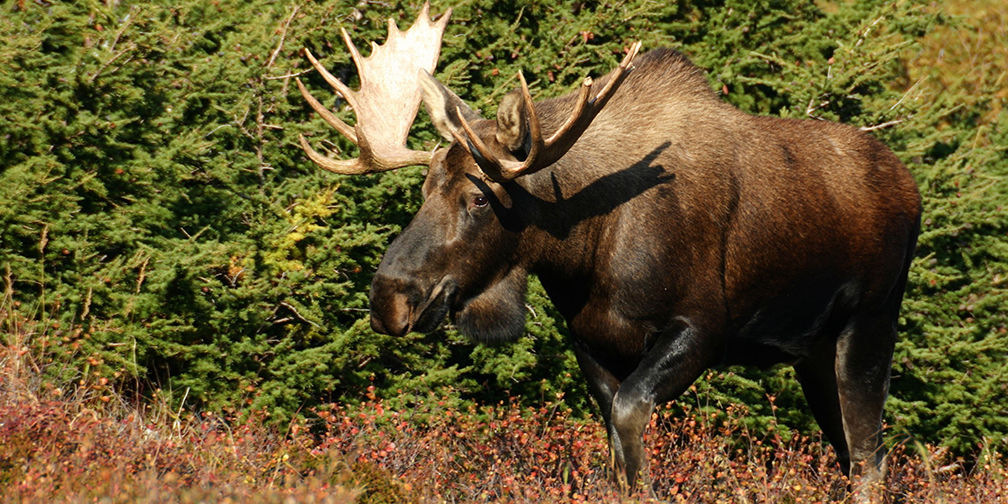Ontario Nature Blog
Receive email alerts about breaking conservation
and environmental news.
© Lora Denis
Neyaashiinigmiing Unceded Lands © QuietFyre CC BY 2.0
Land Back refers to the Indigenous-led movement to reclaim stewardship over traditional lands and ecosystems, protecting them for generations to come. For time immemorial, areas primarily governed by Indigenous Peoples have maintained biodiversity despite continuous human population growth. However, Indigenous communities have been dispossessed from ancestral lands since settler contact. The Land Back movement aims to restore Indigenous governance and land stewardship for a sustainable future.

How can we best protect our biodiversity, land and water? The first step is making restitutions to the land and its rightful protectors.

Ecological degradation continues on lands stolen from Indigenous peoples. While land developments like pipelines or wastewater plants often happen gradually, the environmental implications of these changes are compound. This is known as cumulative impact. For instance, what starts as a housing development can eventually turn into an entire town with warehouses, highways and gas stations.

Indigenous knowledge is rooted in sustainability, conservation and reciprocity with the land. We must not take from the land without giving back and caring for it. A contemporary example of Indigenous-lead sustainability is the fishing methods practiced by the Cree. These methods include the rotation of lakes fished and species caught. Rotational fishing gives lakes and fish populations time to restore while other areas are being fished. This technique is a symbiotic relationship, in which fish populations continue to thrive, while humans sustain the food source. Returning land governance to Indigenous Nations allows this sort of stewardship to take place on a broader scale across Turtle Island.

Last year, Algonquins of Barriere Lake announced a moose moratorium – a ban on moose hunting – for the third year in a row. The moratorium addressed concerns for declining moose abundance within traditional Algonquin territory, and was amplified with an Indigenous-led blockade along a highway access to the moose habitat. This movement has demonstrated the urgency to protect the land and the moose living there, highlighting the great importance of making reparations to Indigenous land stewardship and conservation efforts.

Historically, Indigenous land stewards have cared for important ecosystems in Ontario, such as the rare High Park savannah in what is now known as Toronto. Prescribed burning over the past 4000 years created and maintained this unique ecosystem, one of the northernmost limits of the black oak tree, a practice now embraced by park managers to control invasive species. The Indigenous Land Stewardship Council seeks to empower Indigenous ecosystem management and educates the people of Toronto on ecological Indigenous Leadership in the area. High Park is a contemporary example of the potential to bring together Indigenous land stewardship and the ongoing efforts of park staff and volunteers to protect natural spaces for many years to come, but requires community support for returning stewardship rights to Indigenous Nations, for example, by involving the Indigenous Land Stewardship Council in planning and decision-making.

Another example of Indigenous-led conservation efforts is the road blockade, “1492 Land-Back Lane,” that has been in place in Caledonia, Ontario since the summer of 2020. Protestors demand that any development on traditional Haudenosaunee territory be stopped. This territory is situated on the Haldimand Tract – a parcel that was allotted to the Haudenosaunee in 1784. Since then, this Haudenosaunee land base has been dramatically reduced without their consent – a clear violation of an agreement made over 200 years ago. The goal is to protect what is left of the Haudenosaunee nation’s dwindling territory and to stop the cumulative impact on natural territory taken from Indigenous communities, the rightful and documented stewards of the land.
The movement is working. Ontario Provincial Police has conceded that raiding this blockade will not resolve overarching issues of the land dispute. Members of Six Nations of the Grand River – the most populous reserve in Canada – continue to hold the ground on this land parcel. No development will be permitted without their consent while the blockade continues.

All these examples of Indigenous conservation efforts point to an existing problem: there is inadequate Indigenous representation in ecological decision-making. The Land Back movement strives to restore Indigenous land responsibility for harmonious life between humans and nature, as the ancestors have enjoyed for thousands of years before settler contact.
“The Land Back movement in Ontario and beyond continues to empower Indigenous involvement in decision making processes, decisions that impact our environment at large. Ontario Nature continues to support efforts for Indigenous-led land protection and stewardship.”
– Caroline Schultz, Executive Director, Ontario Nature
To learn more, watch this informative webinar from Conservation Through Reconciliation Partnership, co-hosted by Ontario Nature, the David Suzuki Foundation Decolonizing Water: Land Back: Governance for a Just World; and read ‘Land Back’ is more than a slogan for a resurgent Indigenous movement.

Gananoque Lake Nature Reserve © Smera Sukumar